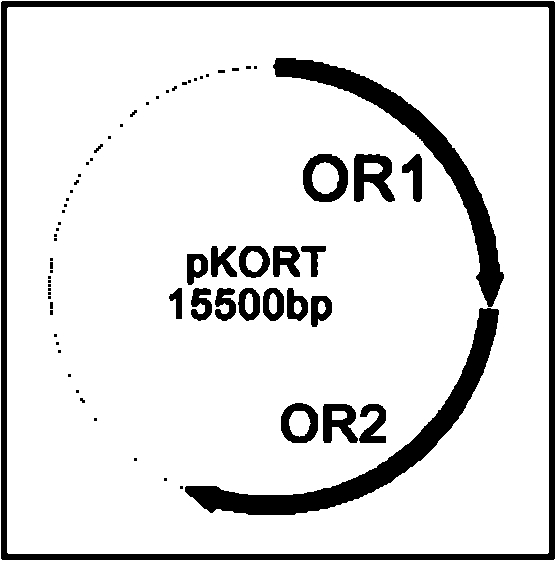Method for simultaneously removing bacillus anthracis virulence megaplasmids pXO1 and pXO2
A Bacillus anthracis and plasmid technology, applied in the field of genetic engineering, can solve the problems of unclear replication and separation of Bacillus anthracis large plasmids, slow research progress, etc.
- Summary
- Abstract
- Description
- Claims
- Application Information
AI Technical Summary
Problems solved by technology
Method used
Image
Examples
Embodiment 1
[0045] Example 1. Acquisition and Identification of Recombinant Bacteria Eliminating pXO1
[0046] 1. Repel plasmid construction
[0047] 1.1 Temperature-sensitive plasmid linearization
[0048] The temperature-sensitive shuttle plasmid pKSV7 (6.9Kb) was linearized with restriction enzymes HindIII and EcoR I (HindIII and EcoR I are the multiple cloning sites of pKSV7), and then separated by 0.6% agarose gel electrophoresis, The target band was excised from the gel, and the linearized vector pKSV7 fragment was recovered with a DNA gel extraction kit, and the operation steps were performed according to the instructions.
[0049] Backbone plasmid: pKSV7 plasmid (neither transposon nor insert sequence on it): Smith K, Youngman P.Use of a new integrational vector to investigate compartment-specific expression of the Bacillus subtilis spoIIM gene[J].Biochimie, 1992 , 74:705-711., publicly available from the Institute of Bioengineering, Academy of Military Medical Sciences, Chinese...
PUM
 Login to View More
Login to View More Abstract
Description
Claims
Application Information
 Login to View More
Login to View More - R&D
- Intellectual Property
- Life Sciences
- Materials
- Tech Scout
- Unparalleled Data Quality
- Higher Quality Content
- 60% Fewer Hallucinations
Browse by: Latest US Patents, China's latest patents, Technical Efficacy Thesaurus, Application Domain, Technology Topic, Popular Technical Reports.
© 2025 PatSnap. All rights reserved.Legal|Privacy policy|Modern Slavery Act Transparency Statement|Sitemap|About US| Contact US: help@patsnap.com



